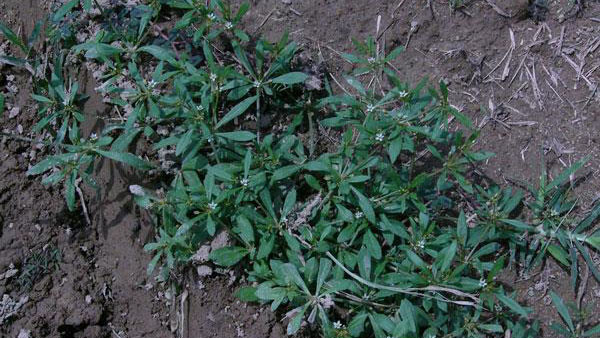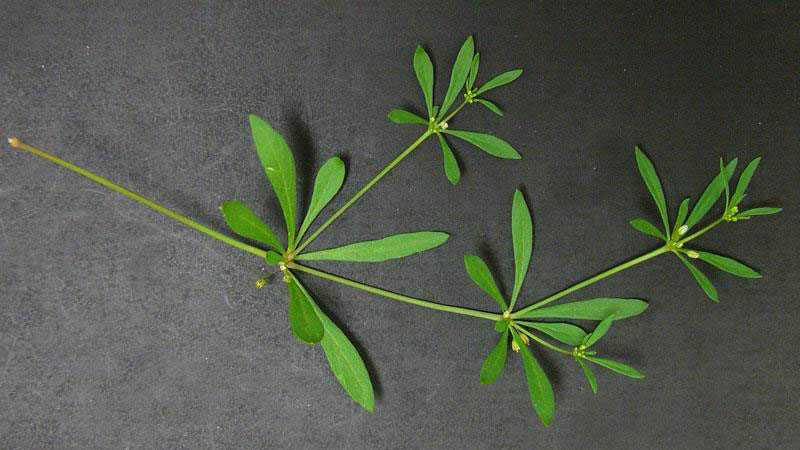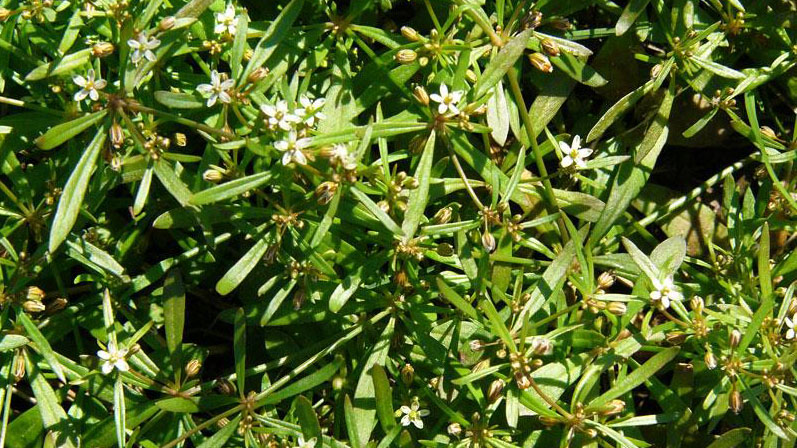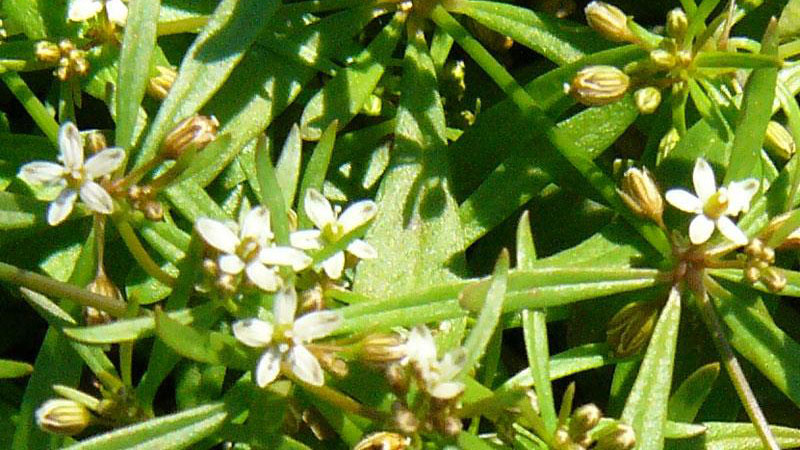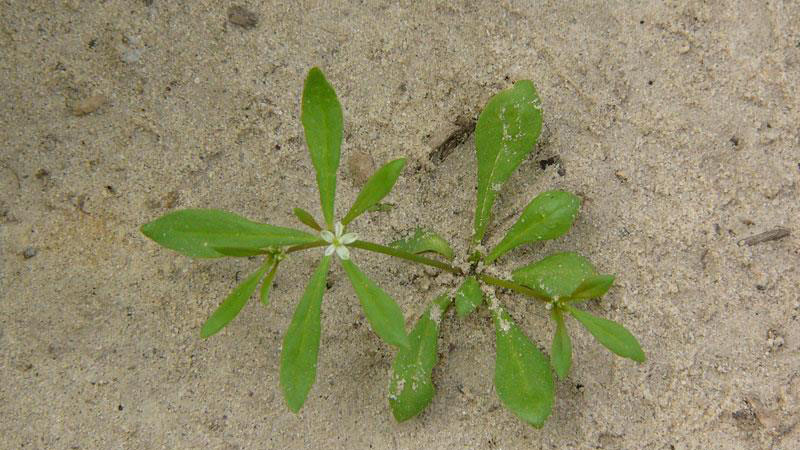Description
Carpetweed (Mollugo verticillata) is a small weed that can cover large patches of ground in a very small time. This summer annual weed has smooth stems and leaves, and white flowers in the joint between leaf and stem. Carpetweed flowers from July to September.
Cultural Control
Maintain a dense, actively growing turf through proper mowing, fertilizing, and watering practices. Mow at the proper height for your selected adapted turfgrass. Coring and traffic control reduce compaction and encourage desirable turfgrass competition. It is best to control this summer annual broadleaf weed in late spring or early summer because it is easier to control at this time and the turf will have a greater chance of recovering the areas previously occupied by weeds.
Species Data
- GROWTH SEASON / LIFE CYCLE
- summer annual weed
- GROWTH HABIT
- LEAFLET NUMBER
- four or more
Figure 5
- four or more
- LEAF MARGIN
- smooth
- LEAF HAIRS
- none
- LEAF / LEAFLET SHAPE
- oval / egg-shaped / elliptical
- LEAF WIDTH
- 1⁄2 - 1 inch
- LEAF VENATION
- pinnate
- LEAF ARRANGEMENT
- whorled or basal rosette
- ROOT TYPE
- fibrous; taproot
- FLOWER COLOR
Publication date: Nov. 16, 2017
Recommendations for the use of agricultural chemicals are included in this publication as a convenience to the reader. The use of brand names and any mention or listing of commercial products or services in this publication does not imply endorsement by NC State University or N.C. A&T State University nor discrimination against similar products or services not mentioned. Individuals who use agricultural chemicals are responsible for ensuring that the intended use complies with current regulations and conforms to the product label. Be sure to obtain current information about usage regulations and examine a current product label before applying any chemical. For assistance, contact your local N.C. Cooperative Extension county center.
N.C. Cooperative Extension prohibits discrimination and harassment regardless of age, color, disability, family and marital status, gender identity, national origin, political beliefs, race, religion, sex (including pregnancy), sexual orientation and veteran status.




